Many thanks to SWLing Post contributor Don Moore–noted author, traveler, and DXer–for the latest installment of his Photo Album guest post series:
Don Moore’s Photo Album:
Guatemala (Part Three) – Guatemala City continued
by Don Moore
More of Don’s traveling DX stories can be found in his book Tales of a Vagabond DXer [SWLing Post affiliate link]. If you’ve already read his book and enjoyed it, do Don a favor and leave a review on Amazon.
When I started DXing in 1971, and for several decades afterwards, the most widely logged Guatemalan shortwave station by DXers was Radio Cultural on 3300 kHz. It was also known as TGNA, the call letters of that 90-meter-band frequency. The medium wave outlet on 730 kHz was TGN. The station also used 5955 kHz and 9505 kHz, but those frequencies were always harder to hear because of interference from more powerful international broadcasters.
Back then this Evangelical broadcaster was owned and operated by the Central American Mission of Dallas, Texas, but only received a portion of its funding from the CAM. Additional funding came from local donations in Guatemala and another important source was selling time to American Evangelical preachers to air their prerecorded English language religious programs. These programs were broadcast late at night, when propagation into North America and Europe was best, and were always preceded by an English station identification. That made it an easier log for DXers who didn’t understand Spanish.
TGNA was the station I most wanted to visit when I arrived in Guatemala City in June 1983. But Guatemala DX Club members informed me that the station had been temporarily closed down because of “philosophical disagreements” with the government. They were off the air and would remain so for several weeks. I made four more visits to Guatemala City over the next year but somehow never found the time to visit the station. It wasn’t until my visit in December 1987 that I finally stepped inside their front door. That visit became the subject of the first article I wrote for Monitoring Times magazine in June 1988.
Wayne Berger, station manager and chief engineer, and missionary Bob Rice gave us a very long tour of the station. Wayne and Bob had built or rebuilt most of the station’s technical equipment and even some of the infrastructure. On the day we arrived they were welding a broken door back on its hinges. Wayne had built the 3300 kHz transmitter, shown in the next picture, out of spare parts.
Main studio control room at TGNA in 1987.
At the time of my visit, TGNA had two pennants. The larger one was mostly reserved for local listeners. The smaller one was sometimes included with QSLs to lucky DXers.
But neither of those compared with these traditional handmade weavings given by listeners for the station’s 37th anniversary in August, 1987. (I just wish my color photos had survived.)
English ID from Radio Cultural, 3300 kHz, as heard in Pennsylvania 23 November 1979 at 0427 UTC:
Radio Cultural, 3300 kHz, as heard in Michigan 23 March 1989 at 1101 UTC:
Easter in Guatemala
Of all the things I’ve seen in my travels, the Easter processions of Guatemala certainly rank near the top. I am fortunate to have been in Guatemala twice for the holiday, in 1982 and 1984, and I plan a return trip in the next few years. Processions take place all over Guatemala during Easter week, but the most elaborate take place on Easter Thursday and Good Friday in Guatemala City and, especially, in Antigua, the old capital twenty kilometers to the west. There are several processions both days in each city and each procession takes several hours.
But in the hours before each procession, the route has to be prepared. Thousands of volunteers create carpets through the streets using pine needles, flowers, corn husks, and colored sawdust. The most elaborate carpets are made in Antigua using colored sawdust and are truly works of art.
Some finished carpets.
At the start of each procession hundreds of people walk by each side of the finished carpet. Most processions consist only of men and most of those are dressed in colorful robes representing the common people at the time of the crucifixion. Some processions include men dressed as Roman soldiers. Only a few processions include women, such as one in Guatemala City that starts with unmarried women dressed in white.
Those people are just the escorts for the main event – huge platforms topped with statues of Jesus Christ (usually carrying the cross) and the Virgin Mary. Each platform is carried by about a hundred faithful parishioners and weighs around 3,600 kilograms (8,000 pounds). Note in the pictures that the bearers have metal poles that can be used to rest the platform on during rest periods. Each bearer has paid for the privilege of participating and many do it as an act of penance. The bearers are mostly men but in the one Guatemala City procession the platform of the Virgin Mary is carried by married women dressed in black (with some men underneath to help hold up the platform).
Remember those beautiful carpets? They were made to honor Jesus Christ and the Virgin Mary and are destroyed by the feet of the platform bearers.
My old photos really don’t do justice to this amazing event. Check out the video links below. Or, better yet, go to Guatemala and see this for yourself.
More Guatemala City Radio
Recordings of several Guatemala City medium wave stations made in Guatemala City in June 1983.
La Voz de las Americas 790 kHz:
Radio Exclusiva 1270 kHz:
Radio Nuevo Mundo 880 kHz:
Radio Panamericana 1030 kHz:
Ciro’s Musical 850 kHz:
La Voz del Hogar 940 kHz:
Radio Mundial 700 kHz:
Next: Part Four – To the Western Highlands
Links
- Video explaining how the sawdust carpets are made
- Videos showing a selection of Easter procession carpets
- Article on carpet construction
- Radio Cultural website
- Radio Cultural Facebook page
- Emisoras Unidas is the largest commercial radio network in Guatemala. I believe all their stations are on FM now.
- The Radio Nuevo Mundo network has likewise all moved to FM.










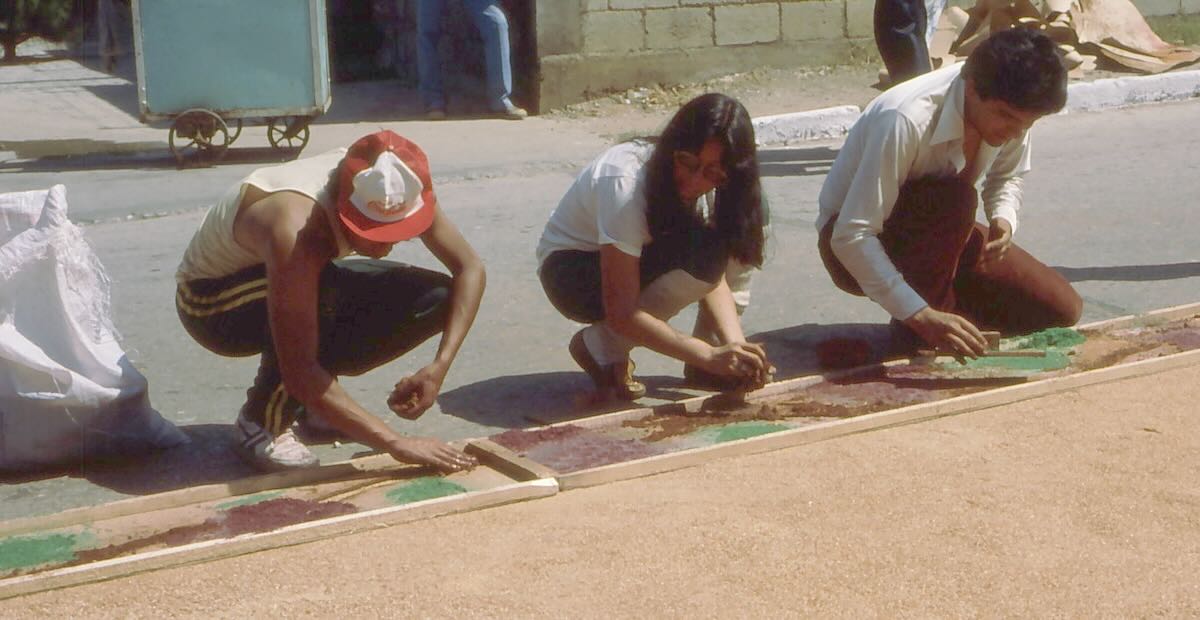
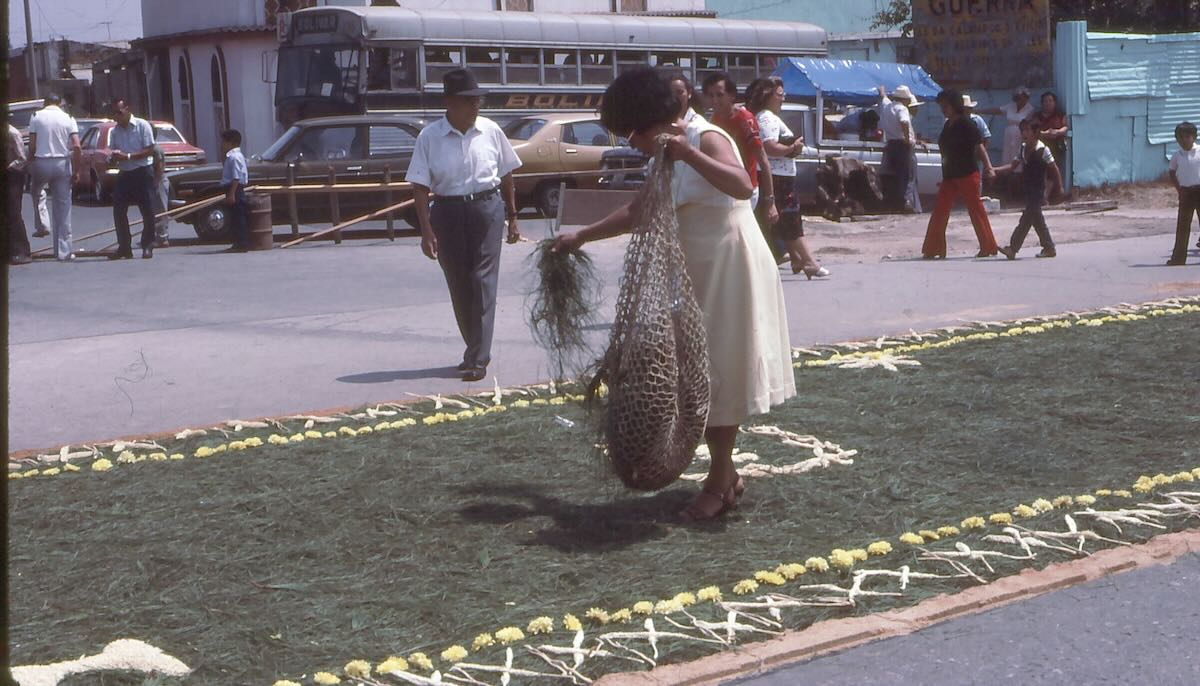

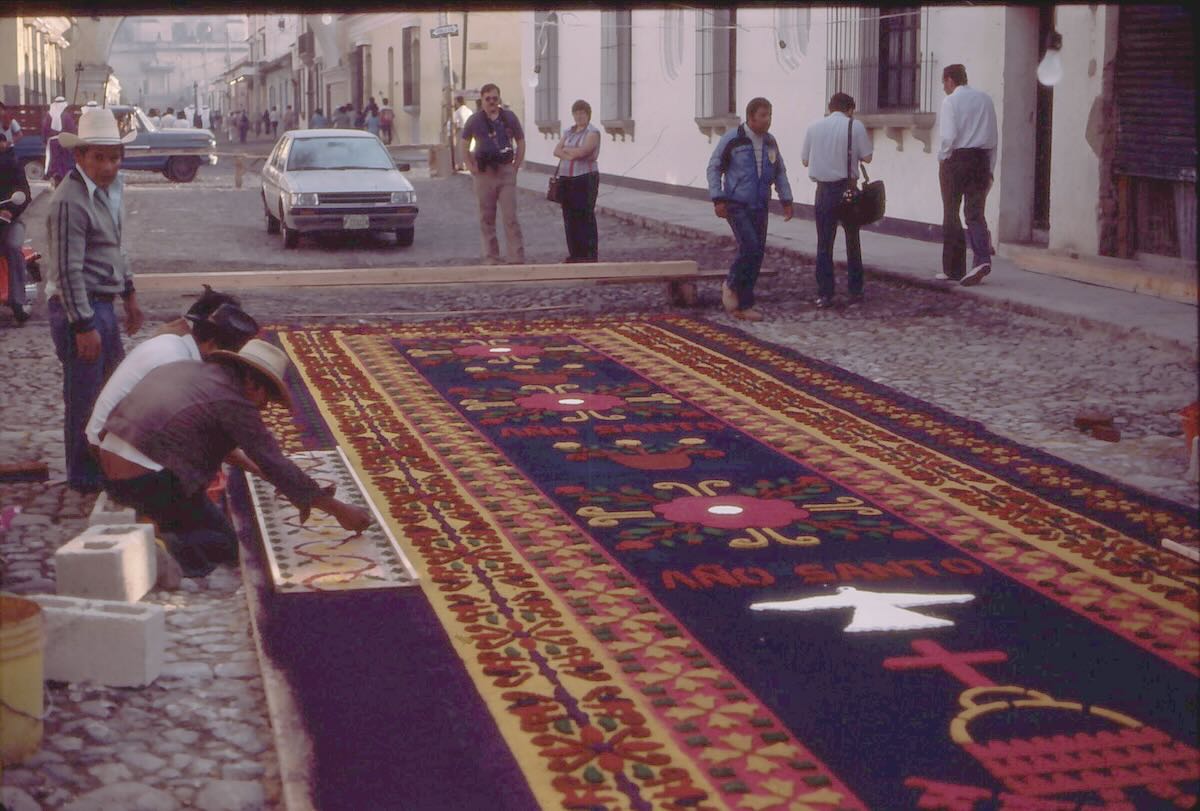
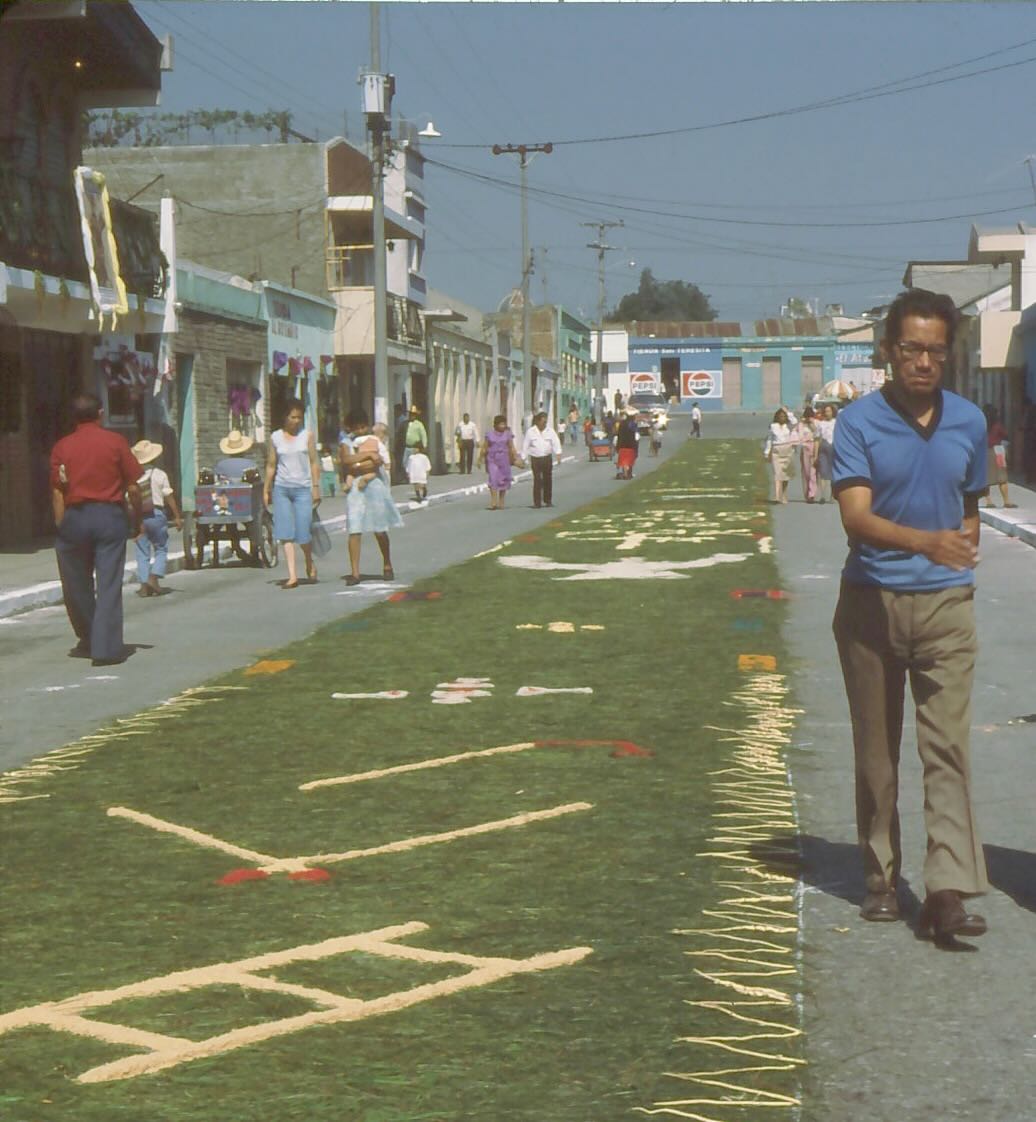
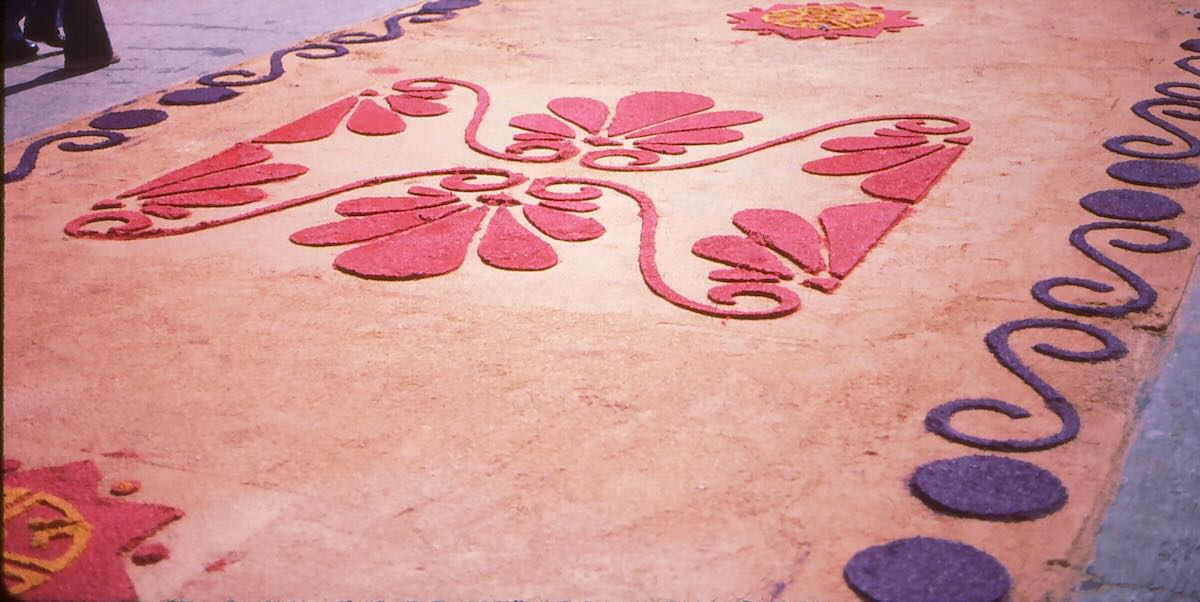
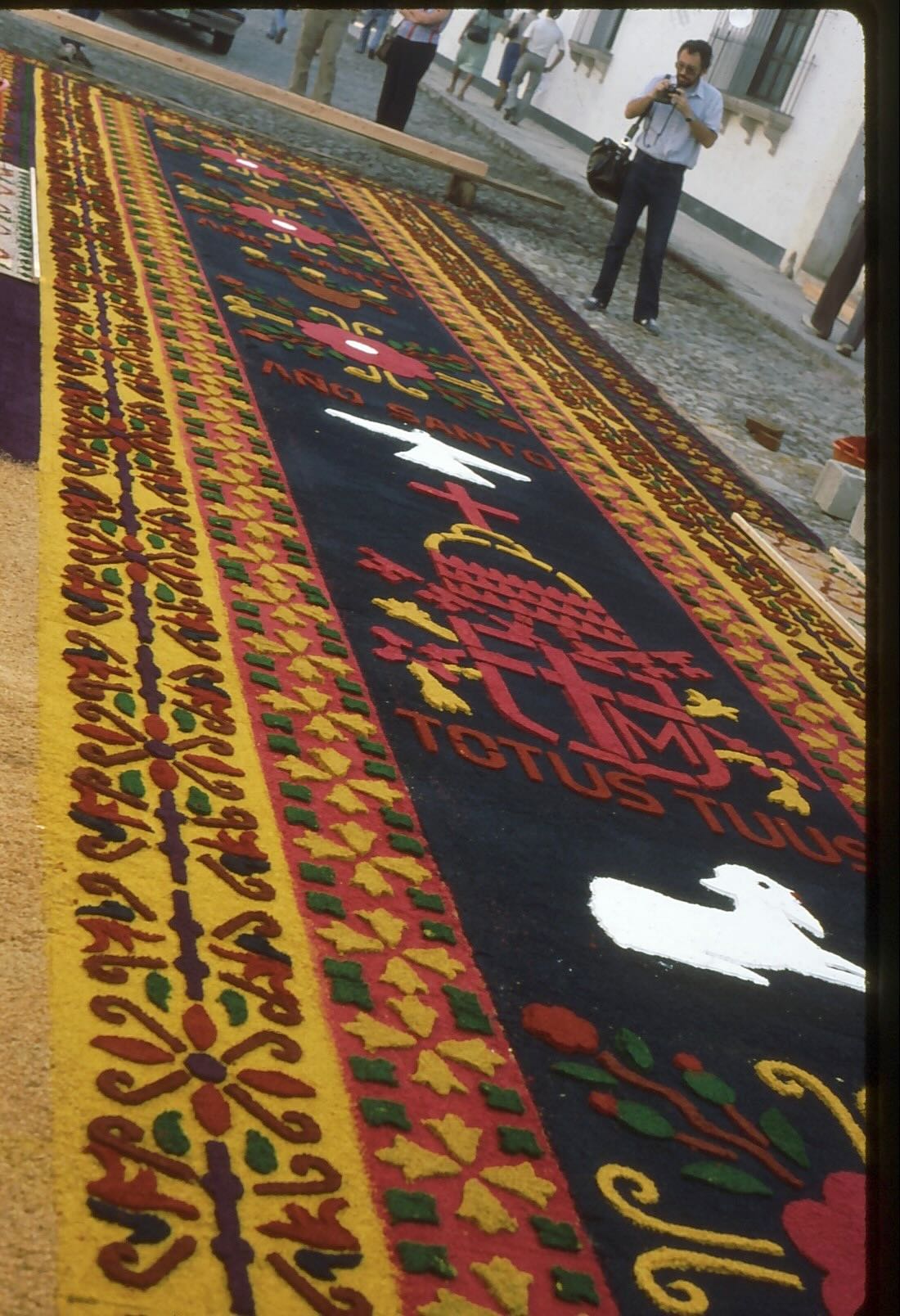
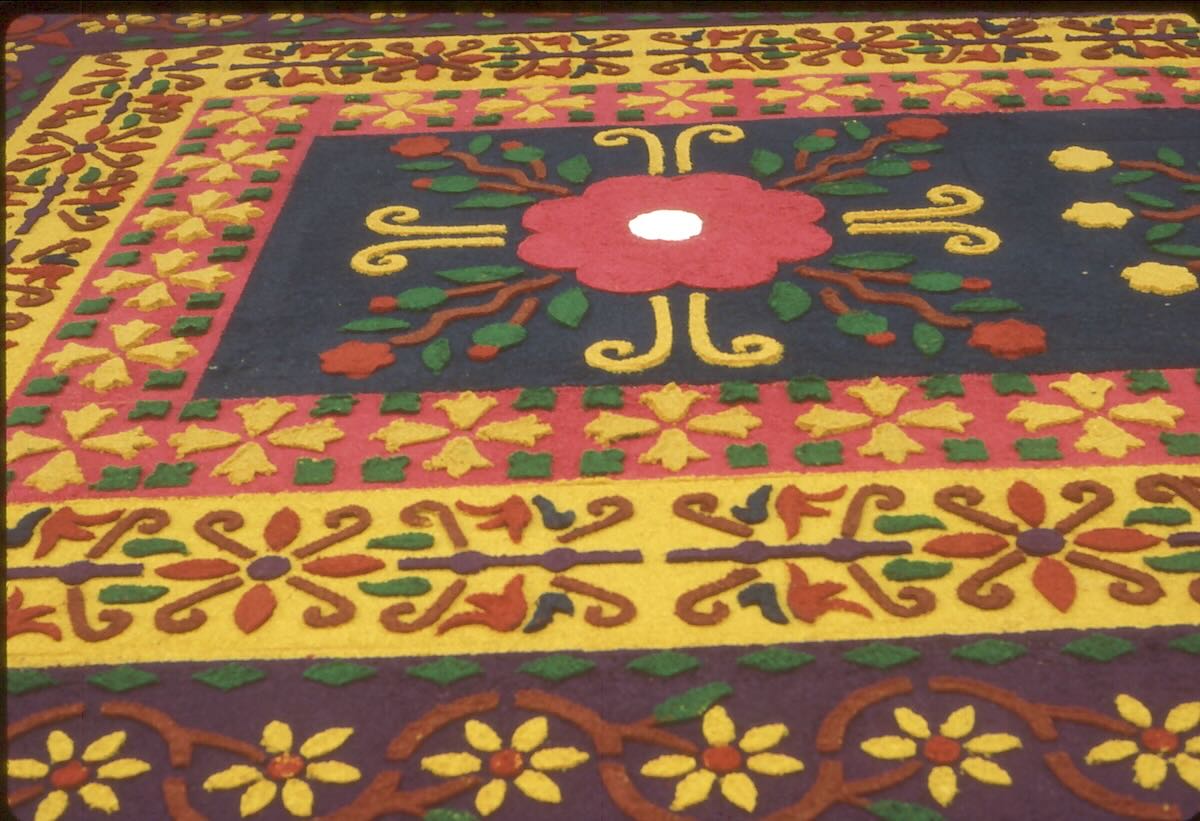
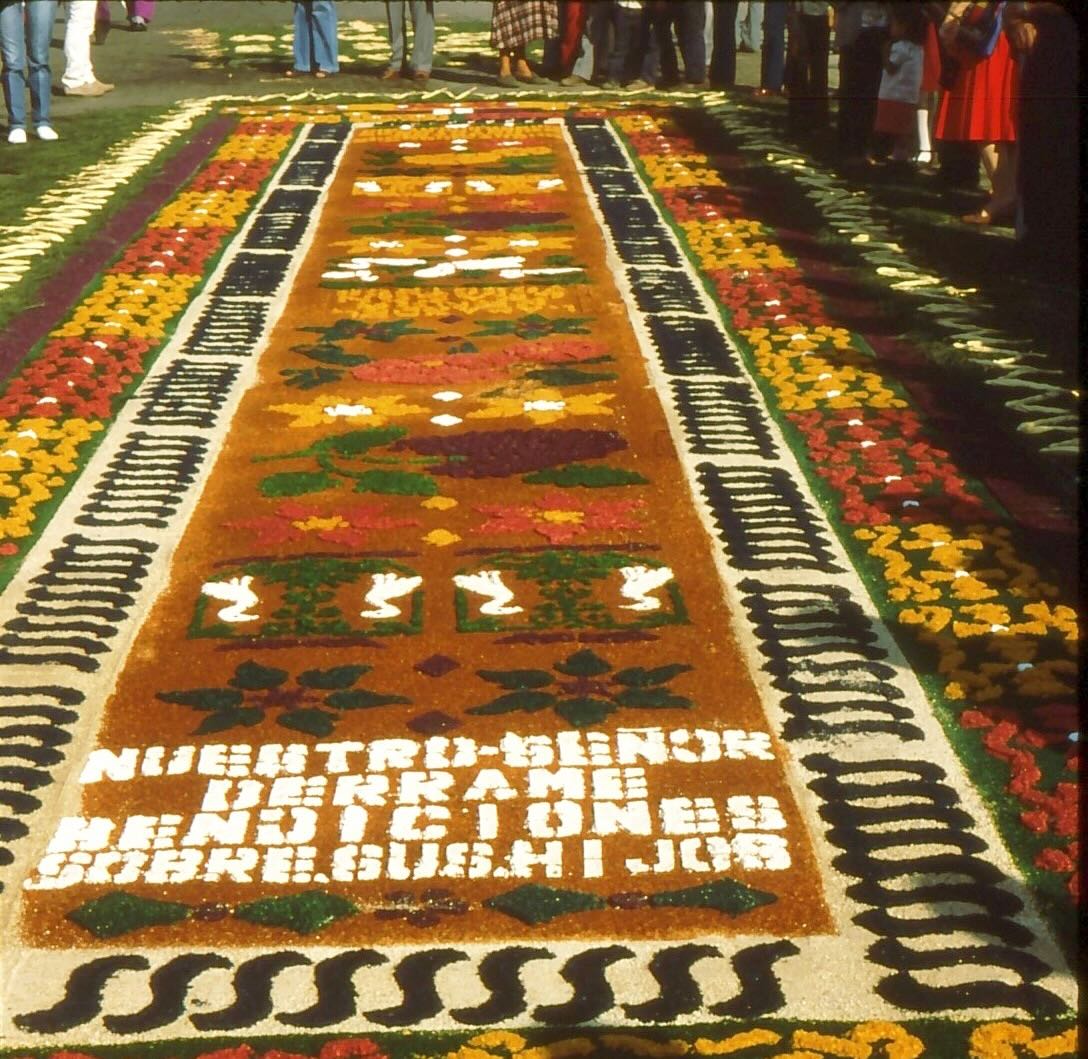
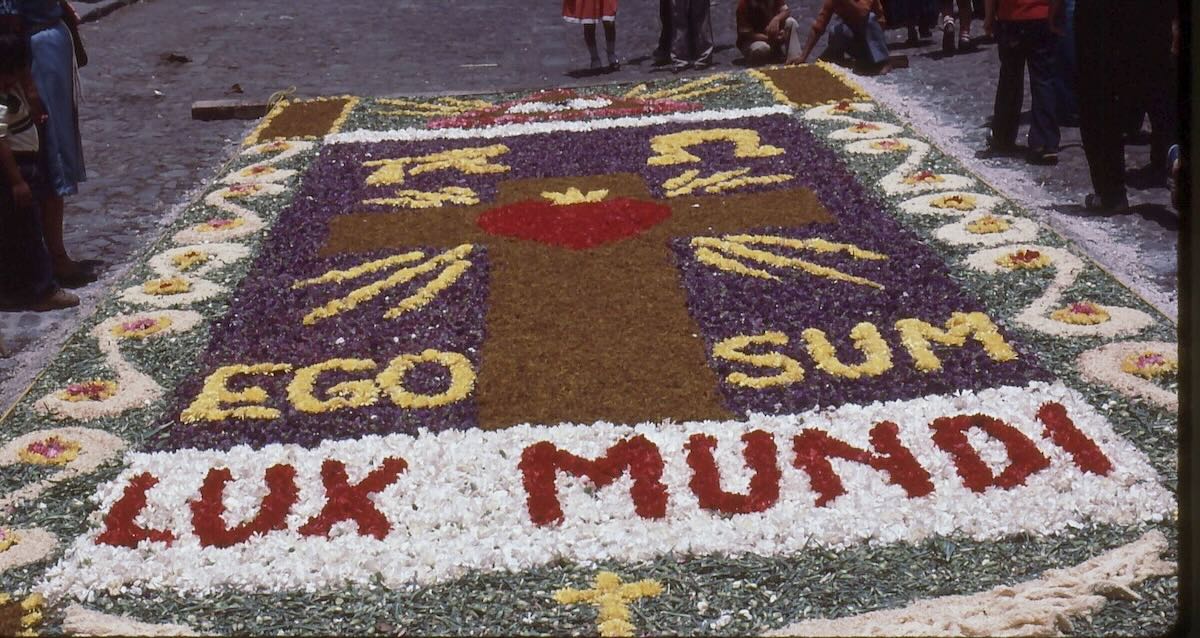
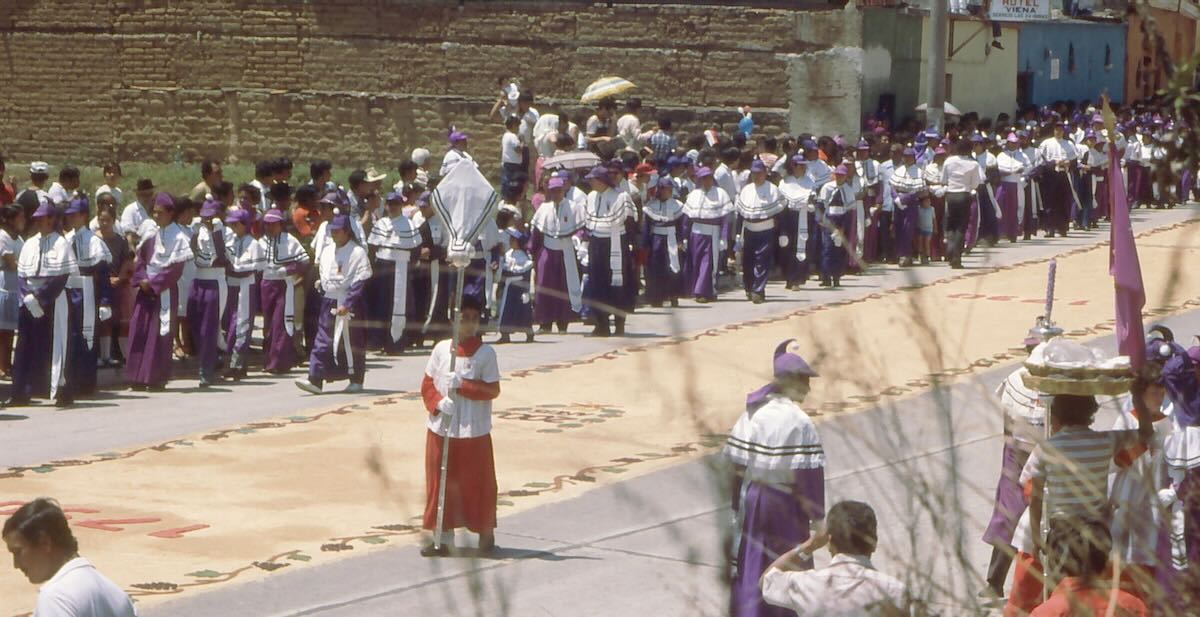

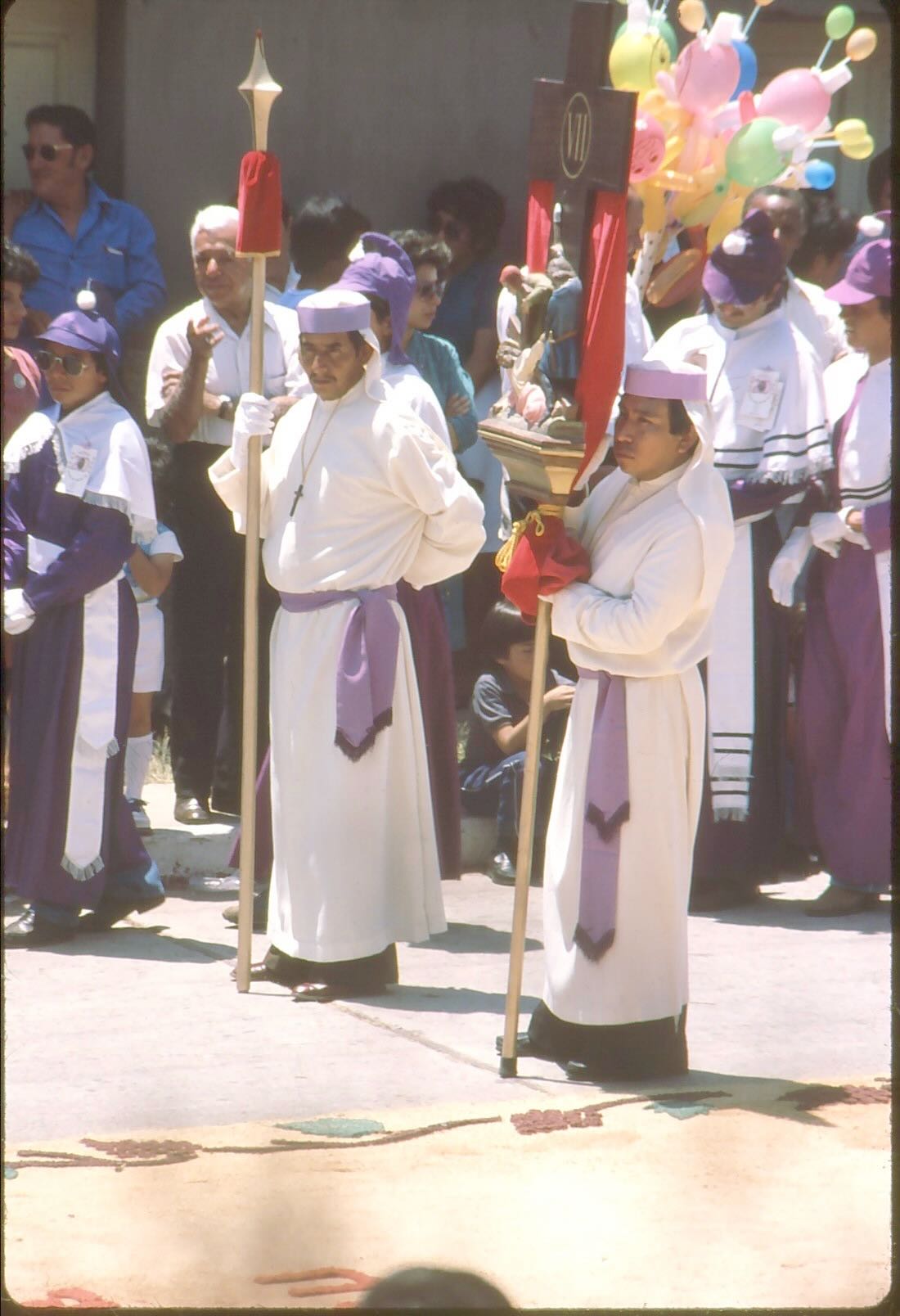
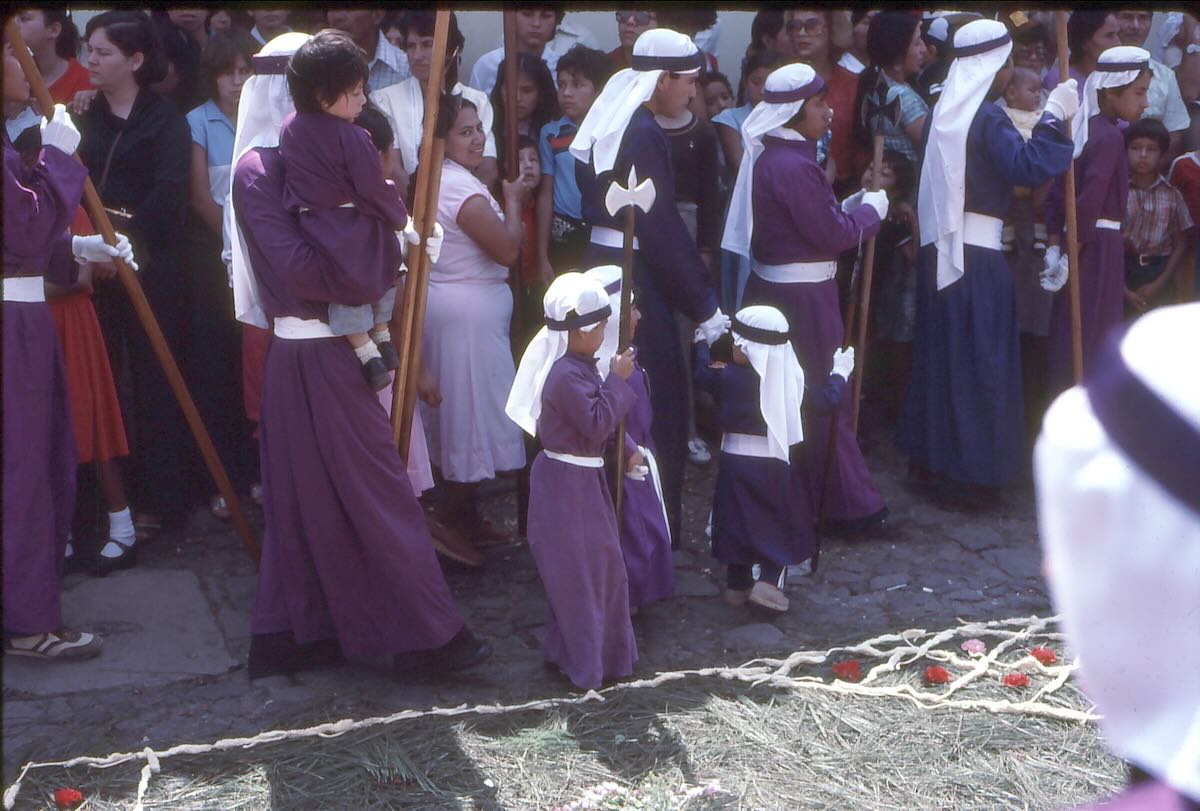
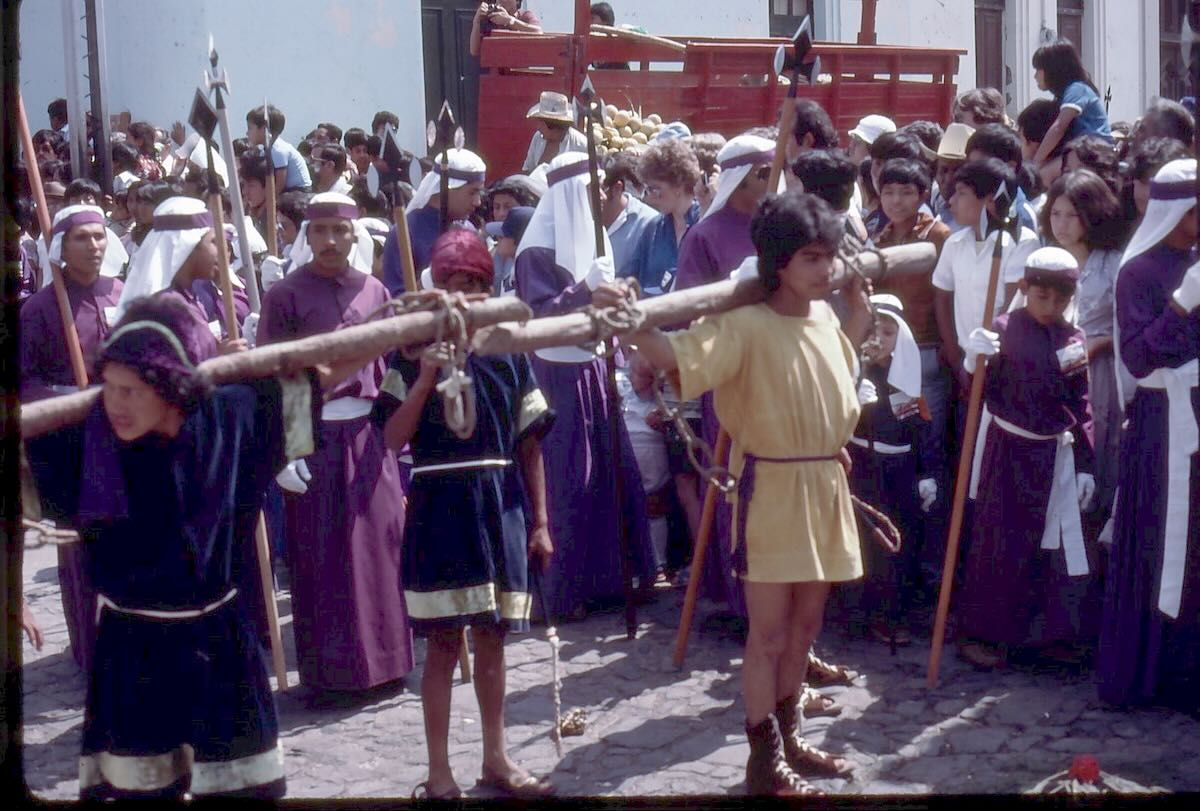
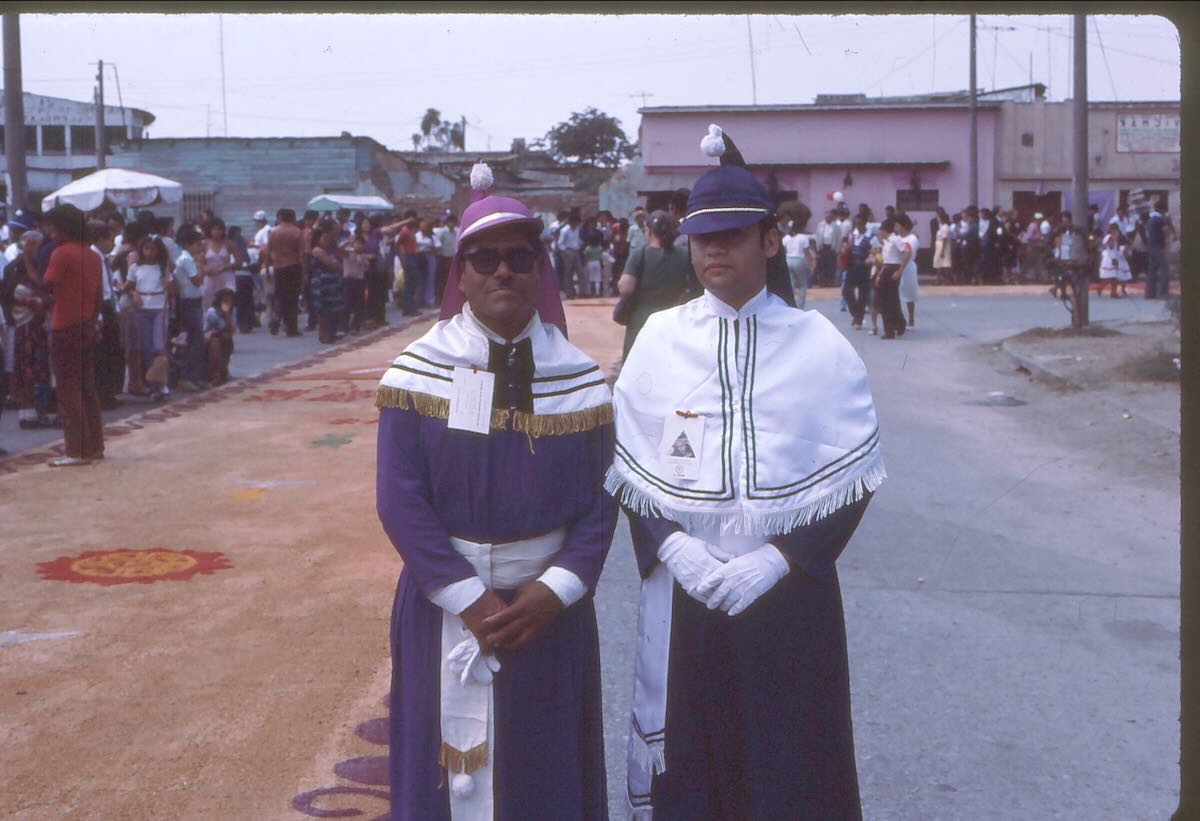
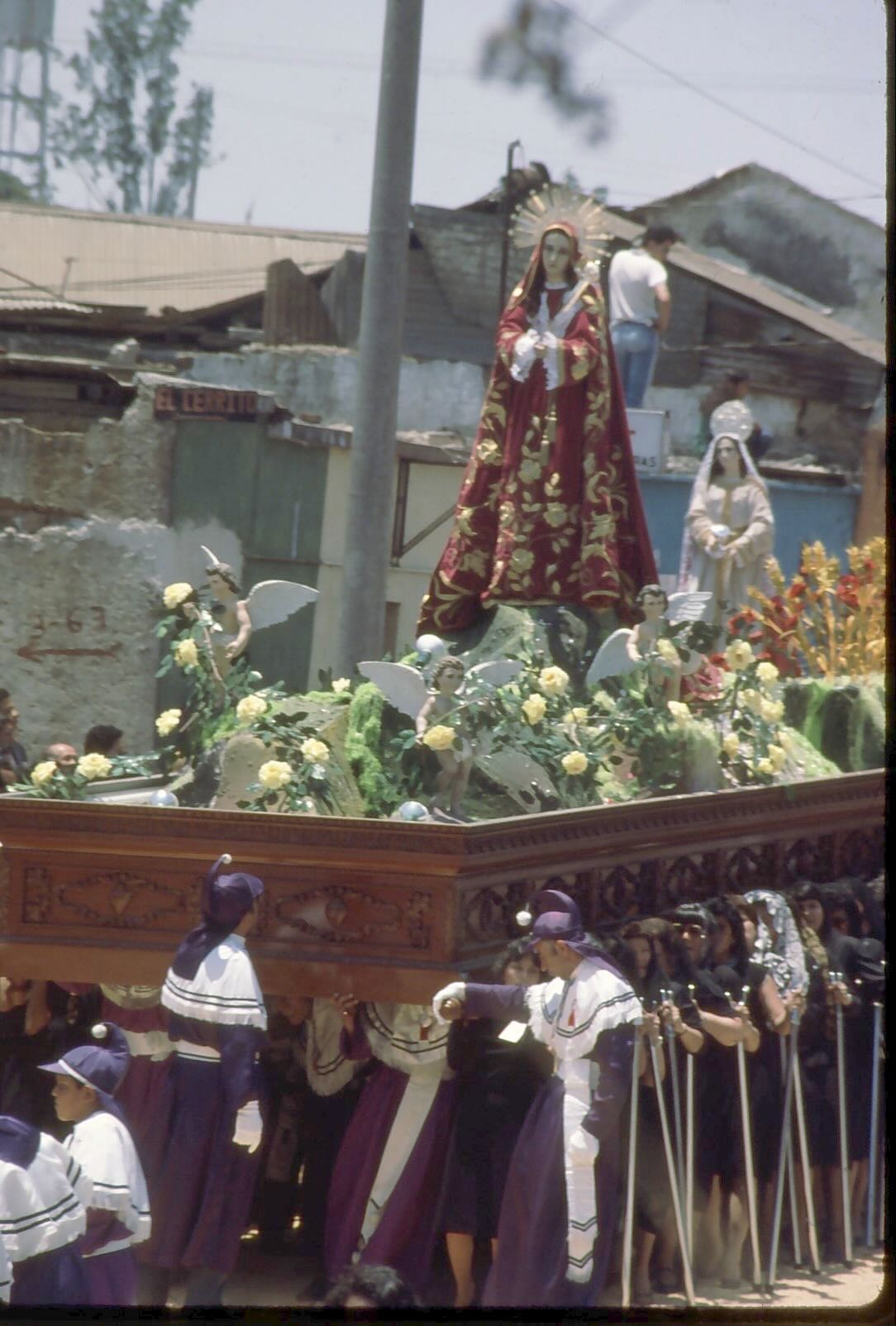
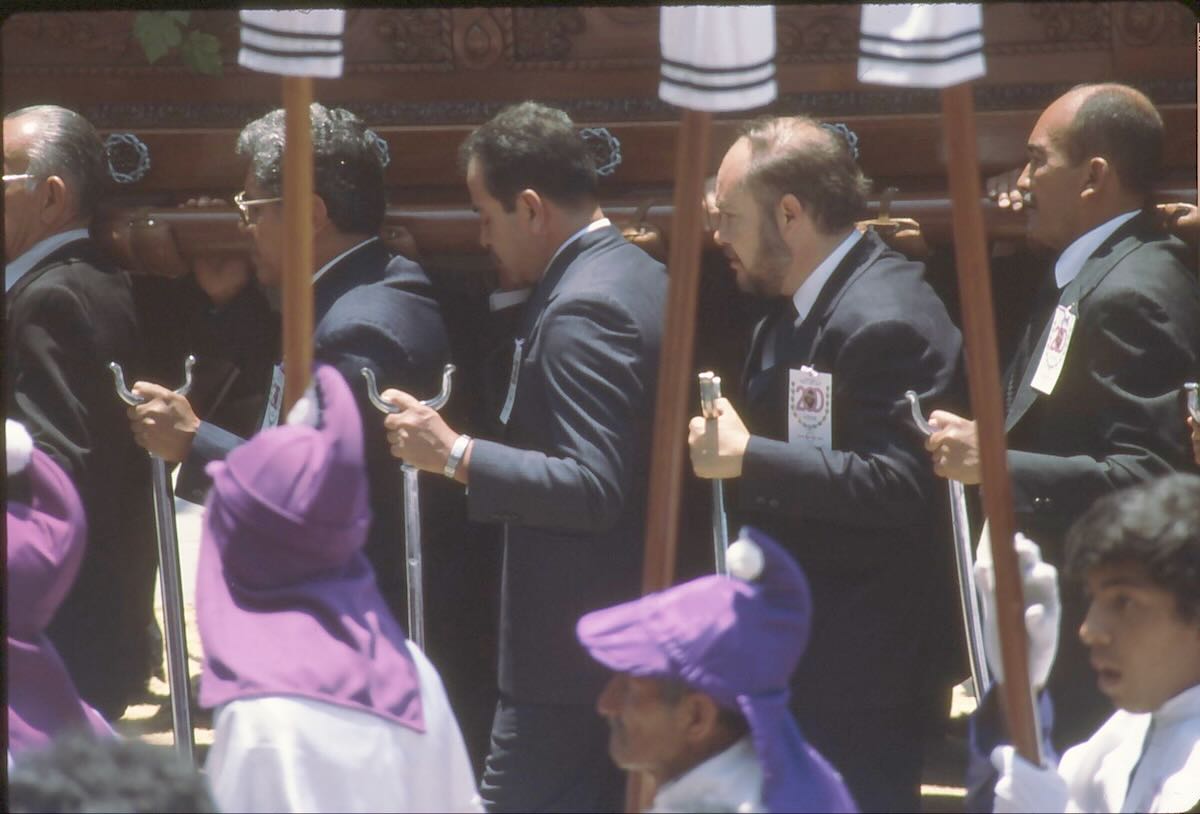
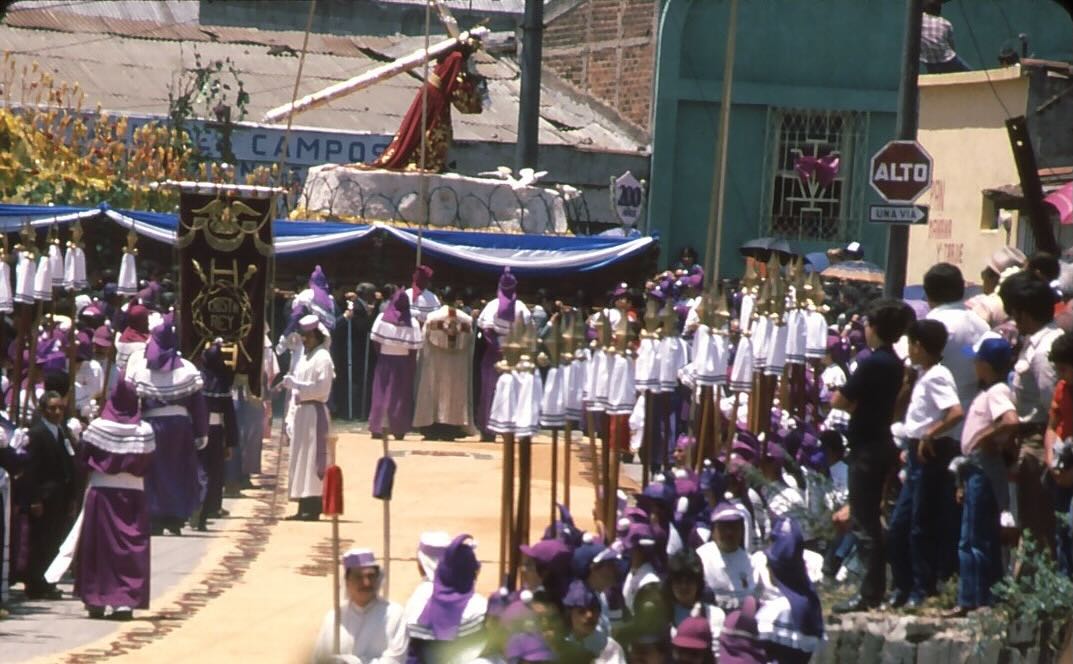
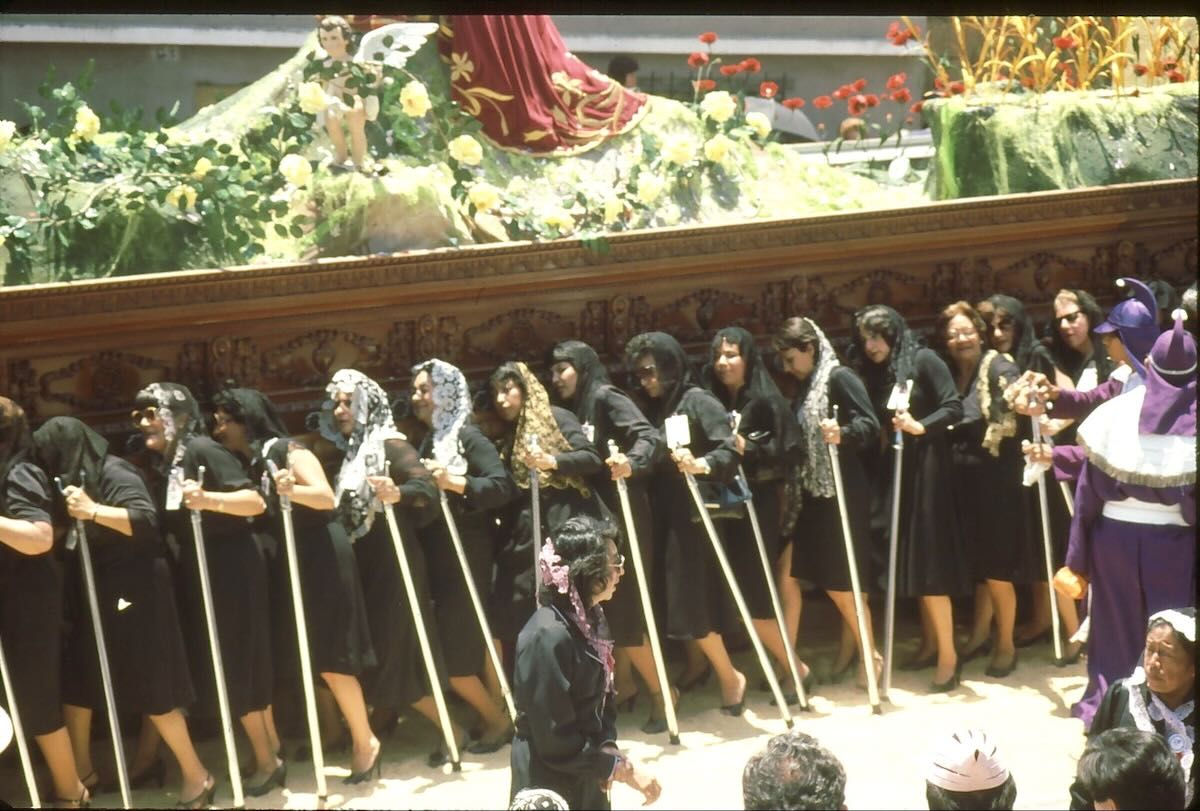
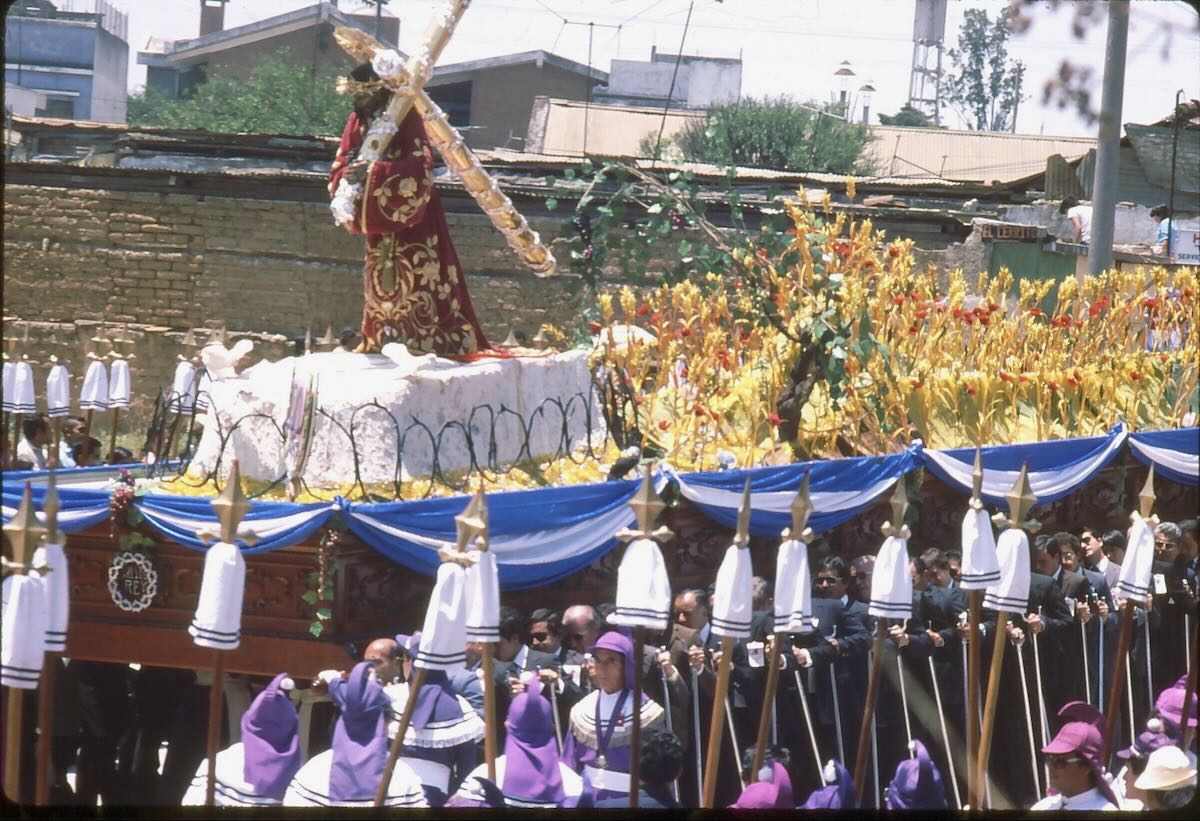
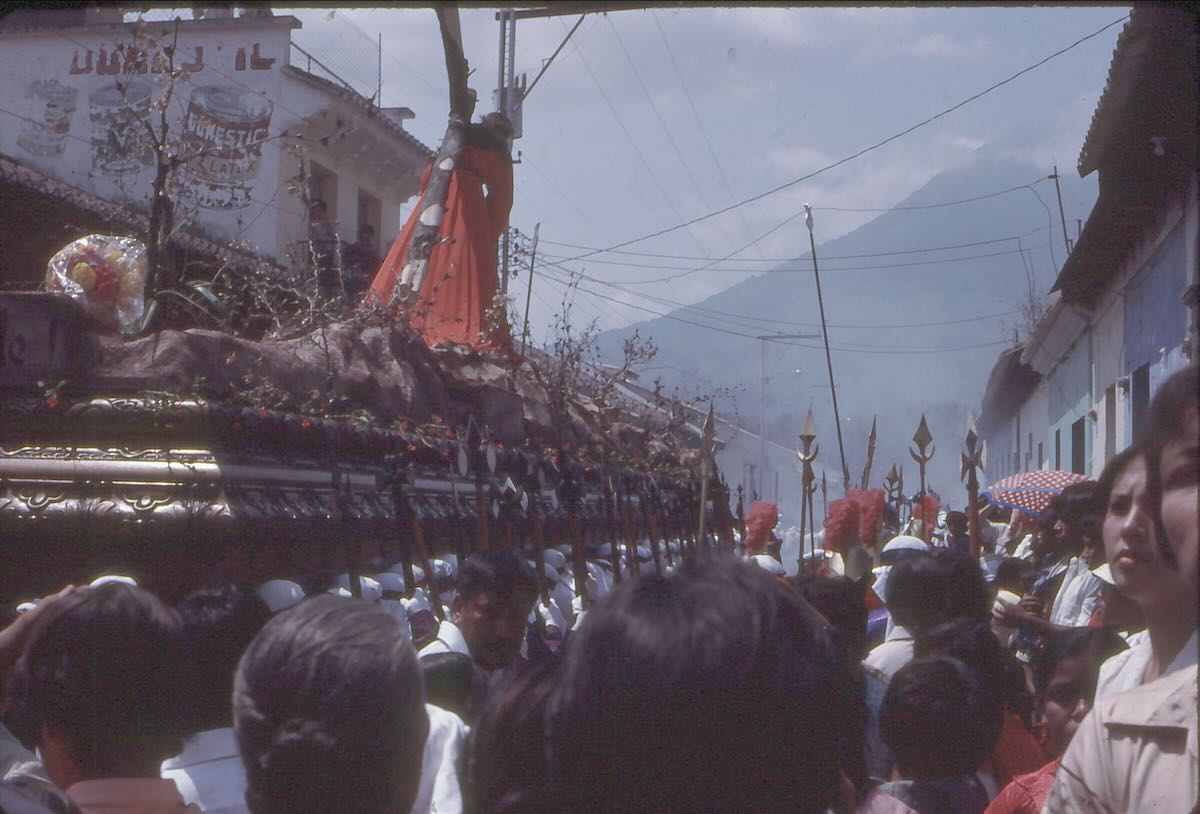
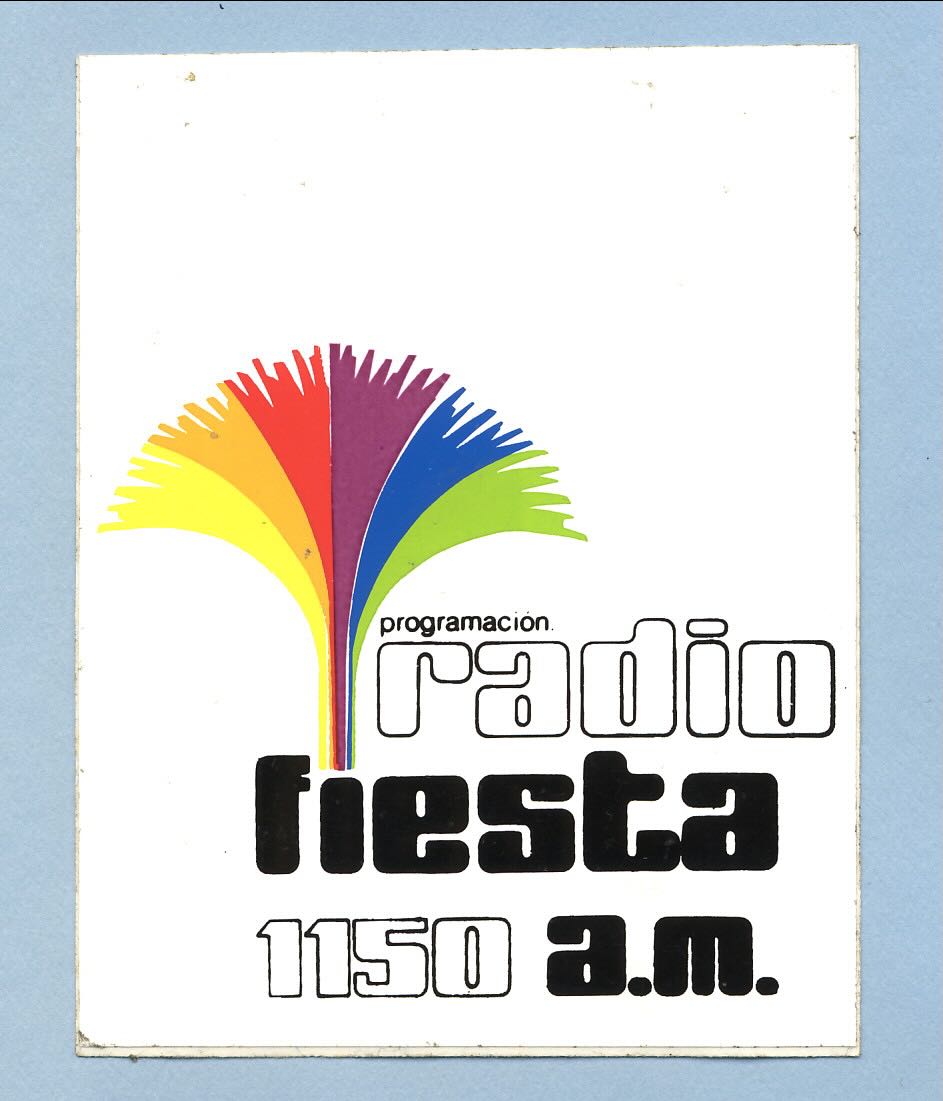
Don, thanks for the photos and recollection. We went to see the Holy Week processions in Antigua in 1977 and indeed, it was a lifetime-memorable experience! Your pix are wonderful. Cheers and 73, Ralph